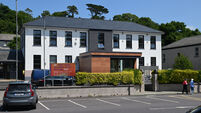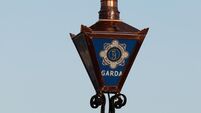Has 673 million km comet chase been a success? Live updates here

It’s the ultimate wake-up call — on the edge of our solar system.
Rosetta was launched from Europe’s spaceport at Kourou, in French Guiana, on March 2, 2004.
It has since travelled over 800 million kilometres — orbiting the Sun five times to pick up energy, and sling-shoting around Earth and Mars — to line it up with its final destination, the enigmatic comet 67P/Churyumov–Gerasimenko.
As Rosetta entered the loneliest and coldest stage of its mission two and a half years ago, it was put into deep-space hibernation as it cruised towards Jupiter.
All but its computers and some heaters were switched off. But its array of hi-tech systems are due to come online at 10am Irish time today in an event which will be watched worldwide.
Once it has warmed up, it should re-establish communication with Earth several hours later.
It will then prepare for its rendezvous with the comet in August before deploying its lander probe, Philae, on to the comet’s surface in November.
By studying the nature of the comet’s dust and gas, Rosetta will help scientists learn more about the role of comets in the evolution of the solar system.
You can follow the Rosetta event from 10am in the live blogging window below.
Two Irish firms worked on mission-critical hardware and software.
CAPTEC, a software company based in Malahide, Co.Dublin, worked on the software that helps Rosetta communicate with the landing probe.
Space Technology Ireland at NUI Maynooth built hardware to deal with data being returned by the lander.
And scientists based at Tyndall’s National Institute in Cork are working on microelectronics technology testing for similar ESA space missions.
To mark the start of the probe’s final leg, CIT Blackrock Castle Observatory in Cork will, in association with the European Space Education Resource Office (ESERO Ireland), host one of hundreds of free science events which are taking place all over Europe this morning to watch the wake-up.
Some 100 school children will visit the observatory where they will link up live with scientists at Tyndall.
The observatory will also open to the public free from 2.30pm to 5pm.












